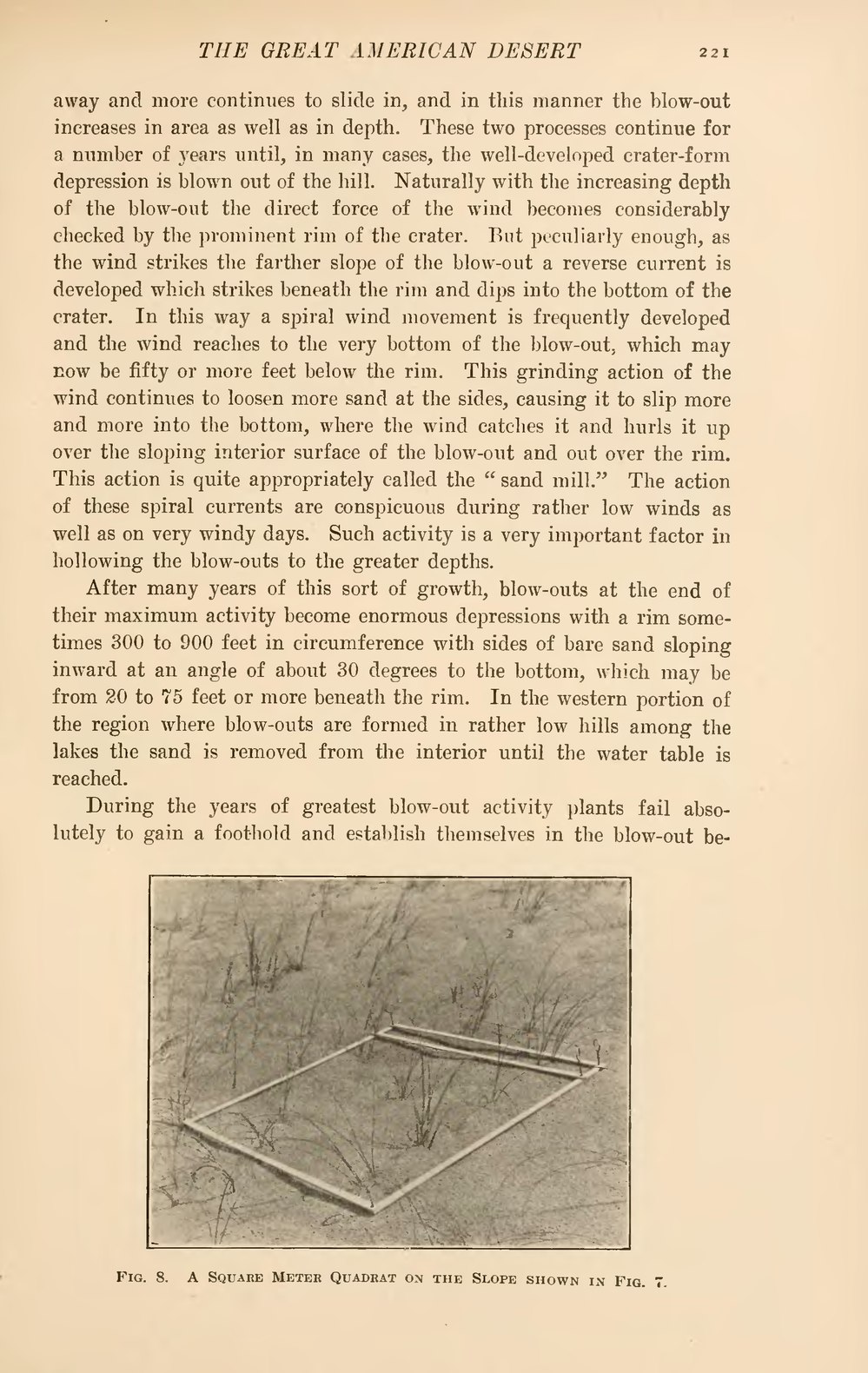away and more continues to slide in, and in this manner the blow-out increases in area as well as in depth. These two processes continue for a number of years until, in many cases, the well-developed crater-form depression is blown out of the hill. Naturally with the increasing depth of the blow-out the direct force of the wind becomes considerably checked by the prominent rim of the crater. But peculiarly enough, as the wind strikes the farther slope of the blow-out a reverse current is developed which strikes beneath the rim and dips into the bottom of the crater. In this way a spiral wind movement is frequently developed and the wind reaches to the very bottom of the blow-out, which may now be fifty or more feet below the rim. This grinding action of the wind continues to loosen more sand at the sides, causing it to slip more and more into the bottom, where the wind catches it and hurls it up over the sloping interior surface of the blow-out and out over the rim. This action is quite appropriately called the "sand mill." The action of these spiral currents are conspicuous during rather low winds as well as on very windy days. Such activity is a very important factor in hollowing the blow-outs to the greater depths.
After many years of this sort of growth, blow-outs at the end of their maximum activity become enormous depressions with a rim sometimes 300 to 900 feet in circumference with sides of bare sand sloping inward at an angle of about 30 degrees to the bottom, which may be from 20 to 75 feet or more beneath the rim. In the western portion of the region where blow-outs are formed in rather low hills among the lakes the sand is removed from the interior until the water table is reached.
During the years of greatest blow-out activity plants fail absolutely to gain a foothold and establish themselves in the blow-out because

